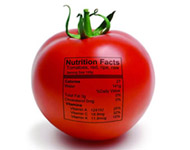Nutrition and Health Sciences, Department of

Department of Nutrition and Health Sciences: Faculty Publications
Document Type
Article
Date of this Version
8-21-2019
Abstract
Previously we have shown in rats a new method of urine collection, hydrophobic sand, to be an acceptable alternate in place of the traditional method using metabolic cages. Hydrophobic sand is non-toxic, induces similar or lower levels of stress in the rat, and does not contaminate clinical urine markers nor metal concentrations in collected samples (Hoffman et al., 2017 and 2018). Urine is often used in humans and many animal models as a readily-attainable biosample which contains proteins and microRNAs (miRNAs) within extracellular vesicles (EVs) that can be isolated to indicate changes in health. In order to ensure hydrophobic sand did not in any way contaminate or disrupt the extraction and analysis of these EVs and miRNAs, we used urine samples from the same 8 rats in the within-subjects crossover experiment comparing hydrophobic sand and metabolic cage collection methods. We isolated EVs and miRNAs from the urine set and examined their quantity and quality between the urine collection methods. We found no significant differences in particle size, particle concentration, total RNA, or the type and abundance of miRNAs contained within the urine EVs due to urine collection method, suggesting hydrophobic sand represents an easy-to-use, non-invasive method to collect rodent urine for EVs and biomarker studies.
Included in
Human and Clinical Nutrition Commons, Molecular, Genetic, and Biochemical Nutrition Commons, Other Nutrition Commons


Comments
OPEN ACCESS CC-BY-NC-ND